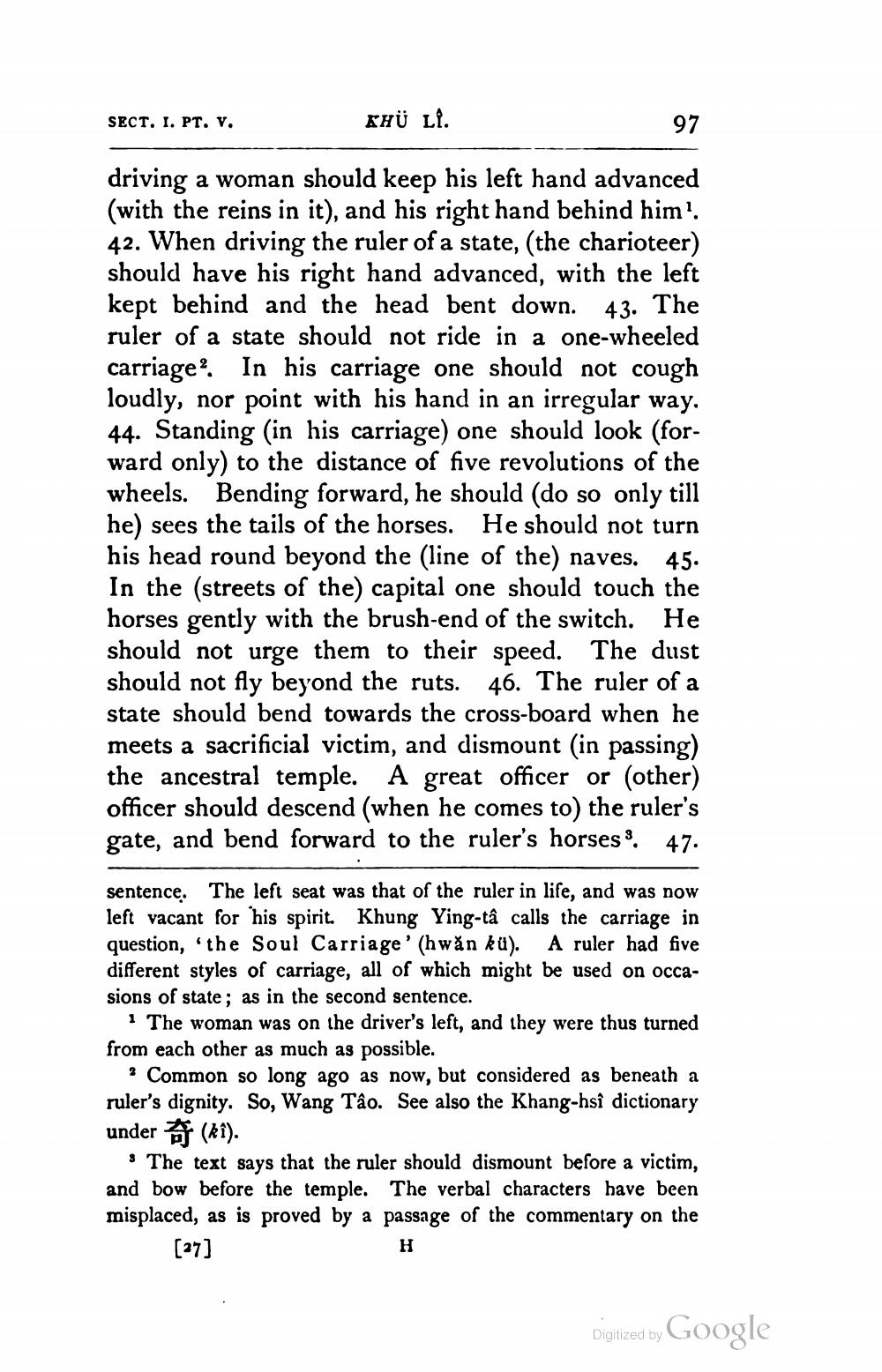________________
SECT. I. PT. V.
KHU LE.
97
driving a woman should keep his left hand advanced (with the reins in it), and his right hand behind him!. 42. When driving the ruler of a state, (the charioteer) should have his right hand advanced, with the left kept behind and the head bent down. 43. The ruler of a state should not ride in a one-wheeled carriage?. In his carriage one should not cough loudly, nor point with his hand in an irregular way. 44. Standing (in his carriage) one should look (forward only) to the distance of five revolutions of the wheels. Bending forward, he should (do so only till he) sees the tails of the horses. He should not turn his head round beyond the line of the) naves. 45. In the streets of the capital one should touch the horses gently with the brush-end of the switch. He should not urge them to their speed. The dust should not fly beyond the ruts. 46. The ruler of a state should bend towards the cross-board when he meets a sacrificial victim, and dismount (in passing) the ancestral temple. A great officer or (other) officer should descend (when he comes to) the ruler's gate, and bend forward to the ruler's horses 3. 47.
sentence. The left seat was that of the ruler in life, and was now left vacant for his spirit. Khung Ying-tâ calls the carriage in question, the Soul Carriage' (hwăn kü). A ruler had five different styles of carriage, all of which might be used on occasions of state; as in the second sentence.
1 The woman was on the driver's left, and they were thus turned from each other as much as possible.
? Common so long ago as now, but considered as beneath a ruler's dignity. So, Wang Tâo. See also the Khang-hsî dictionary under (ki).
The text says that the ruler should dismount before a victim, and bow before the temple. The verbal characters have been misplaced, as is proved by a passage of the commentary on the [27]
H
Digitized by Google




